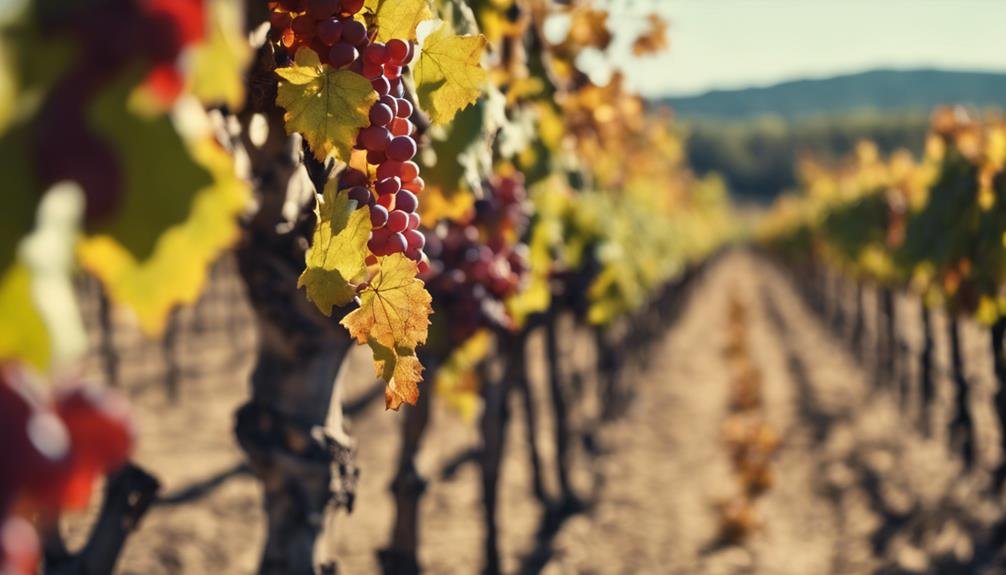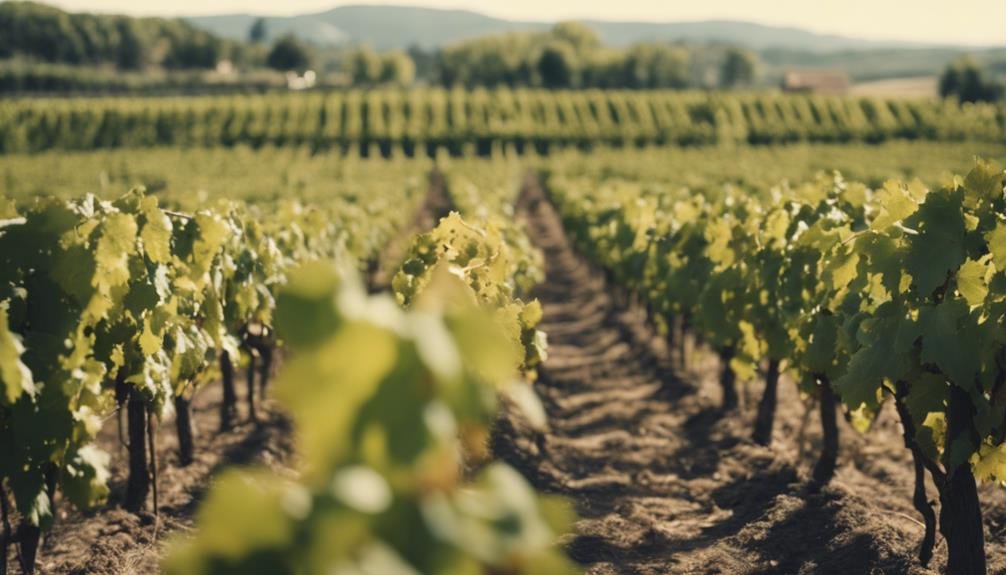Efforts to combat Grape Phylloxera's devastation have been ongoing since its late 1800s emergence, posing significant challenges in vineyards globally. Despite extensive research, finding a definitive cure remains elusive due to complexities in the louse's life cycle and adaptability. Europe witnessed over 70% vine loss, leading to economic turmoil, yet some vineyards resiliently survived. Additionally, resistant vineyards with factors like sandy soil offer hope and intrigue researchers, hinting at potential solutions. The battle against Grape Phylloxera's impact continues with resilient vineyards paving the way for innovative approaches.
Origin and Impact of Grape Phylloxera
The devastating impact of Grape Phylloxera, a microscopic louse that feeds on grape roots, originated in the late 1800s, causing widespread destruction in vineyards worldwide.
The origins of Phylloxera can be traced back to the United States, where it spread through infested grape cuttings brought back to Europe by Count Agoston Haraszthy. This pest not only devastated vineyards but also caused immense hardships for families and businesses reliant on grape cultivation.
Struggles in Finding a Cure
Despite numerous efforts and significant research, finding a cure for Grape Phylloxera has proven to be a formidable challenge in the agricultural community.
The agricultural sector has faced various challenges and setbacks in combating this microscopic louse that devastates vineyards.
Researchers have encountered difficulties in developing a definitive solution to eradicate Phylloxera infestations effectively.
Setbacks have been observed in the quest for a cure, despite the continuous efforts put forth to address this agricultural menace.
The complexities of the louse's life cycle and its ability to adapt have contributed to the struggles in finding a lasting remedy.
These obstacles have highlighted the need for innovative approaches and sustained research to overcome the challenges posed by Grape Phylloxera.
Spread and Devastation in Europe

Struggles persist in the agricultural community as Grape Phylloxera's spread and devastation in Europe have left a lasting impact on vineyards across the continent.
European vineyards faced unparalleled challenges as the microscopic louse decimated grapevines, particularly in France where over 70% of vines perished by the early 1900s. The Phylloxera devastation spread rapidly, leading to an international wine deficit and significant economic losses.
Despite efforts to combat the louse, many vineyards succumbed to its destructive effects, reshaping the landscape of European viticulture. The resilience of some vineyards against Phylloxera remains a mystery, offering hope amidst the widespread devastation that continues to threaten vineyards globally.
Unclaimed Reward for Solution
Amidst the extensive research and numerous proposed solutions, the reward offered by the Minister of Agriculture in France for a Grape Phylloxera cure remains unclaimed to this day. Despite over 450 articles discussing Phylloxera solutions and the discovery of grafting European grapevines onto American rootstock as an effective method to combat the louse, the reward for a definitive solution was never paid. Viticulturist Leo Laliman's attempt to claim the reward was denied, leaving the mystery of the unclaimed reward lingering. This denial sheds light on the complexities surrounding the acknowledgment and compensation for vital agricultural breakthroughs. The table below provides a visual representation of the unclaimed reward scenario:
| Reward Denial | Phylloxera Solution |
|---|---|
| Reward offered | Numerous proposals |
| 450+ articles | Grafting discovery |
| Researchers | Unclaimed reward |
| Viticulturist | Reward denial |
| Global threat | Ongoing challenge |
Mystery of Resistant Vineyards

The enigma surrounding vineyards that exhibit resistance to Grape Phylloxera continues to intrigue researchers and viticulturists worldwide. Vineyard mysteries persist as certain vineyards remain untouched by this devastating louse, despite its destructive nature.
The secrets of resistance lie in various factors such as sandy soils in windy regions that contribute to the vines' ability to ward off Phylloxera infestations. For instance, Australia's enactment of the Vine Protection Act in 1874 helped shield regions like Tasmania and Western Australia from the louse, creating Phylloxera-resistant vineyards that puzzle experts.
These resistant vineyards stand as a beacon of hope amidst the threat Phylloxera poses to vineyards globally, inspiring ongoing research to unravel their secrets and potentially aid in combating this relentless pest.
Frequently Asked Questions
How Did Phylloxera Impact the Global Wine Industry?
The economic impact of Phylloxera on the global wine industry was profound, leading to widespread devastation of vineyards in the late 1800s. However, this crisis spurred innovation in farming practices, such as grafting European grapevines onto American rootstock, which ultimately helped restore vineyards.
What Methods Were Tried Before Grafting for a Cure?
Various methods were attempted before grafting to combat Grape Phylloxera's devastation. Early efforts included chemical treatments and experimenting with hybrid plants. These approaches aimed to halt the louse's spread but ultimately proved ineffective, leading to the adoption of grafting techniques.
Which European Regions Were Hit Hardest by Phylloxera?
French vineyards suffered the most devastating impact from Phylloxera, with over 70% of vines lost by the 1900s. Italian vineyards also faced severe losses, while Spanish and Portuguese vineyards were greatly affected, contributing to an international wine deficit.
Why Was the Reward for a Phylloxera Solution Never Paid?
The reward for a Phylloxera solution was never paid due to a payment dispute despite a groundbreaking scientific breakthrough. This historical decision had financial implications and left the researcher, Leo Laliman, denied of recognition despite the solution's significance.
What Factors Contribute to a Vineyards Resistance to Phylloxera?
Vineyard resistance to Phylloxera can be attributed to soil composition, rootstock selection, pest management, and vineyard practices. Sandy soils in windy regions, using resistant rootstocks, and implementing effective pest control strategies are key factors in combating Phylloxera infestations.
Conclusion
In the annals of viticulture, the relentless march of Grape Phylloxera left a trail of devastation in its wake, with vineyards worldwide falling victim to its insidious attack.
Despite the struggles in finding a cure and the unclaimed reward for a solution, the mystery of resistant vineyards continues to intrigue and caution viticulturists.
The tale of Grape Phylloxera serves as a reminder of the importance of proactive measures in safeguarding vineyards against potential threats.
